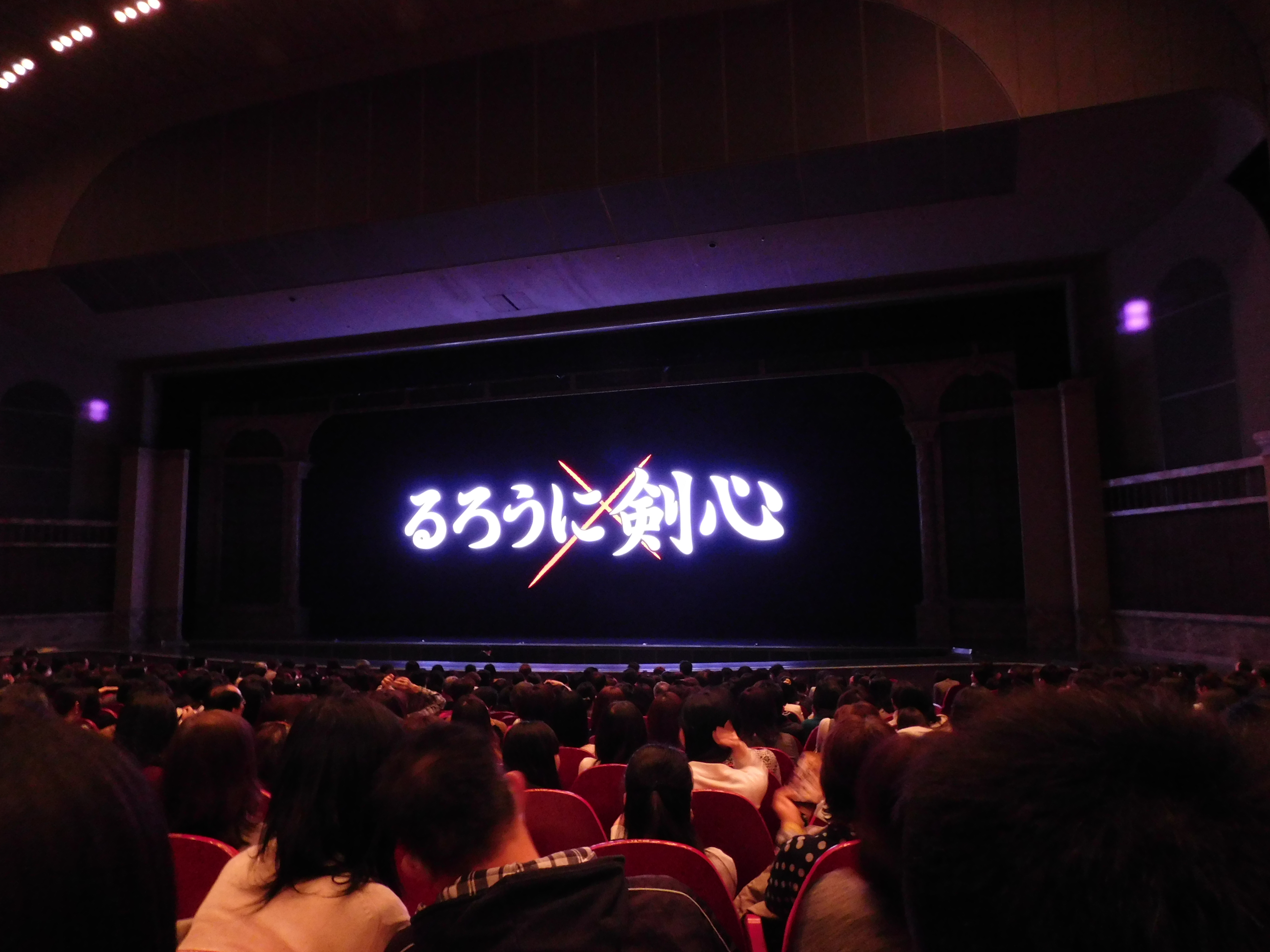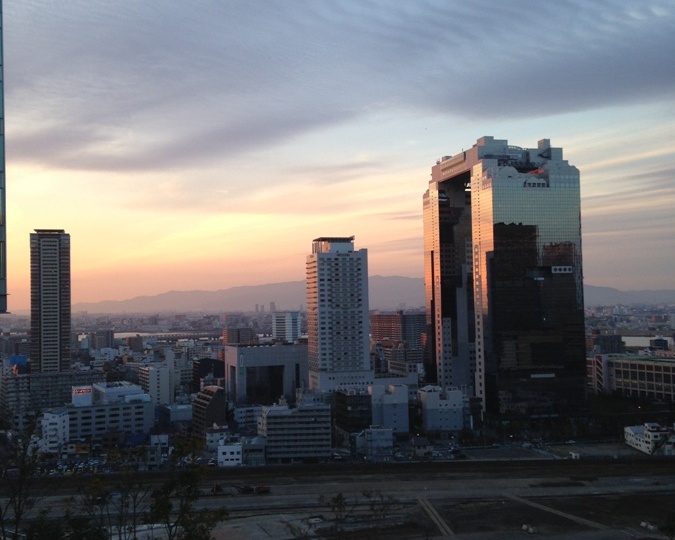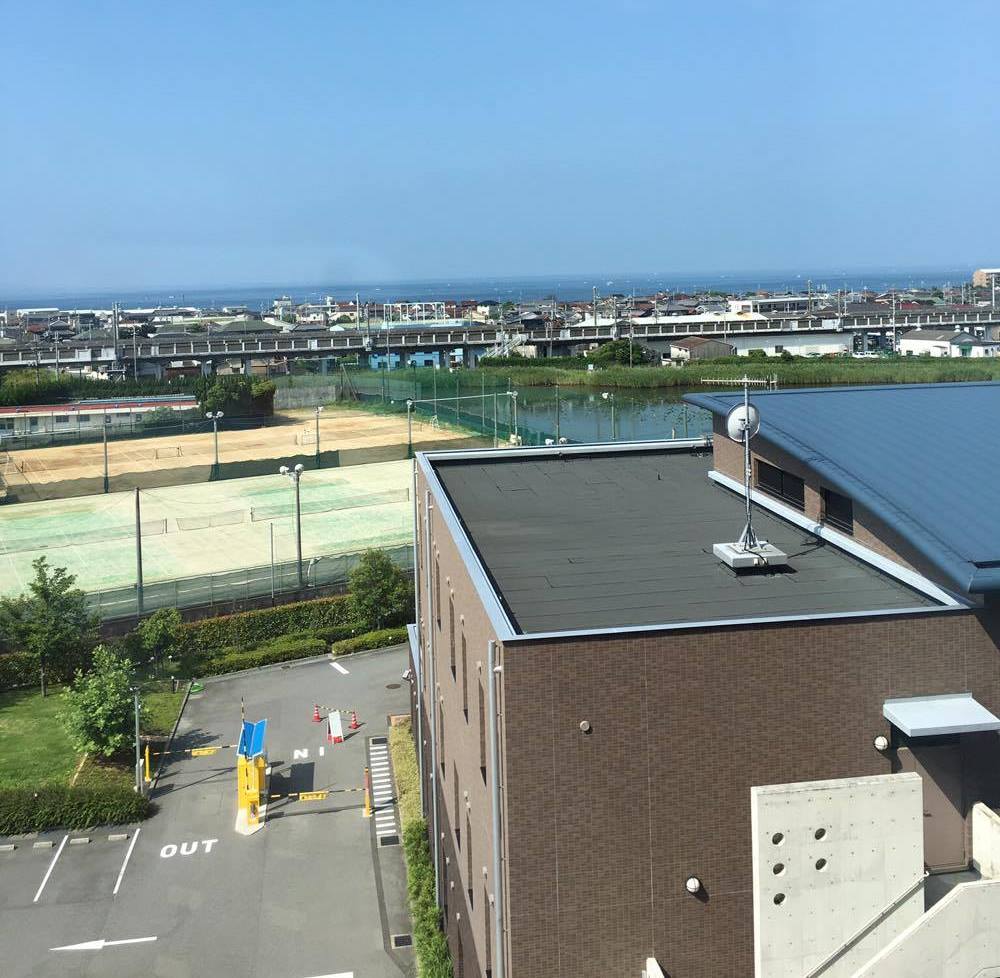Who Needs a Revue Anyway? Takarazuka’s Rurouni Kenshin Adaptation
As many fellow nerds may know, the Snow Troupe of the all-female theater troupe of Hyogo has been performing a musical version of the manga Rurouni Kenshin. The aforementioned is the story of a samurai with a bloody past, wandering during the first several years of the Meiji Era to atone for his many slaughters. It has been adapted many times over in several forms, and most have been well-received. Based on my own opinion, the play should be as well.
Those who have read the manga would probably have the most enjoyment (and the fewest “spoilers,†if there is such a thing for a story completed over 15 years ago). Watchers of the anime up through episode 28 or so will be familiar with all of the major characters (excepting the added one; we’ll get to him in due time), but some of Kenshin’s backstory will be novel. I can’t say much about how it compares to the live action films or OVAs, having never watched them.
Within the play, backstory doesn’t remain much of a mystery. Kenshin is first introduced in his heyday as Hitokiri Battousai (or, in English translations, Battousai the Manslayer). Megumi is similarly initially shown concocting the “spider opium†that figures heavily into the play’s plot, as well as Saitou’s role (besides swaggering around looking tough). Most character information is doled out upfront. Gone is the shifting perspective audiences may have from first experiencing the manga or anime, learning more as the series pushes on.
There were also several flashbacks employed, almost exclusively concerning Hitokiri Battousai and Sozaburo Kano, the added character. These were done spectacularly, especially with Kano’s reintroduction as a Francophilic business man, to show the audience what the characters were remembering, considering, or struggling with. The flashback characters were in the spotlight while the rest of the stage was dimmed, which was visually very appealing.
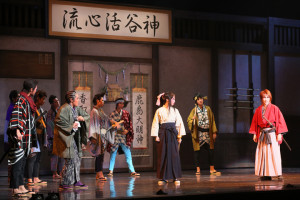
While I didn’t appreciate the (arguably) primary reason Kano was added into the story, I felt his past with Kenshin was done effectively. His raison d’être (again, arguably) was to provide romantic tension between Kenshin and Kaoru, the main female character. After drugging both, he begins to start groping Kaoru, and after Kenshin’s interruption, creeps on him as well. This change, along with others, also took away a lot of Kaoru’s bite, making her much less of a badass than her manga and anime counterparts. Sadly (judging from my enormous sample size of two), boring and meek female characters seems to be a staple of the Takarazuka Revue.
Happily, many of the best staples of Rurouni Kenshin made it into the stage production. Seina Sagiri’s 「ãŠã‚ã€s were flawless. Sanosuke’s absurdly-sized sword makes a brief appearance. Yahiko’s actress was hilarious to watch in the background, and her voice was perfect. I’m offended on her behalf that her photo wasn’t used in any of the promotional materials (or in the lobby). The gang visits 赤ã¹ã“ for some beef nabe, complete with one of the more ridiculous song and dances I’ve seen. The prize for most ridiculous, however, goes to Takeda’s gatling gun song. It gave just the right mix of insanity and hilarity to the character, allowing Kano to serve as the primary antagonist.
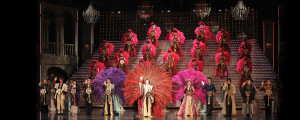
In general, the music was very revue-esque. The pit was on-point the entire time, and their timing for sound effects during the fight scenes was incredible. I particularly enjoyed the bassoon and amped violin. The sweet, sweet synthesizer was also fun. As always, the performance concluded with a revue section, full of a number of absurd costumes. You can really tell who is top-billed based on how many feathers they’re wearing. Since Rurouni Kenshin occupied a large part of the second half, this was shortened, which I won’t really lose any sleep over.
Should you want to see the play, you have a couple options. If you have 年休 and no classes, there are still advanced tickets being sold on the foreigners’ website. At the time of writing, shows are available at 11 AM on the 3rd, 8th, and 10th, at 3 PM on the 10th, and at 1 PM on the 11th. Otherwise, you can go to the theater early in the morning to try to buy last-minute (usually those for standing at the back) tickets. There should be around 40 or so for each performance. This should
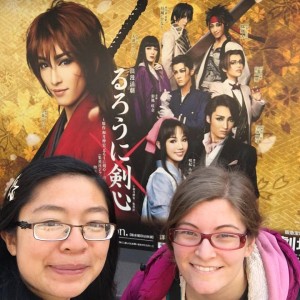
work both for the rest of its run in Takarazuka and when it moves to Tokyo from April 1st until May 8th. It could be a fun Golden Week trip! For those unable to make it, here’s a video from the Takarazuka website.
Brittany Teodorski
